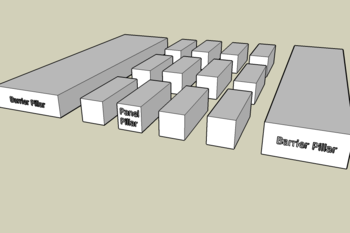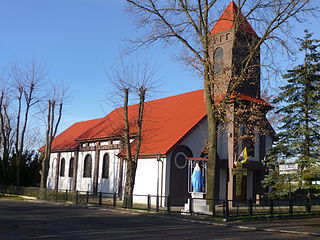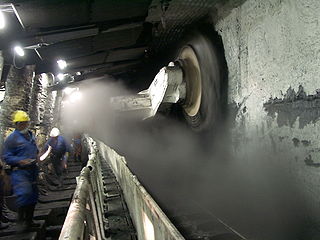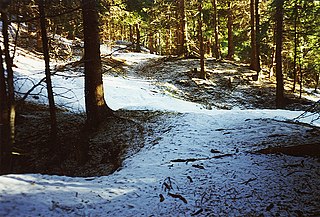Process
Stage 1—exploration and development
Planning for the development of room and pillar mines operates in much the same way as other mining methods, [10] and begins with establishing ownership of the mine. Following this, the geology of the mine must be analysed, as this will determine factors like the lifespan of the mine, the production requirements, and the cost to develop and maintain. [10]
Next, mine layout should be determined, as factors like ventilation, electrical power, and haulage of the ore must be considered [4] [10] in cost analysis. Due to the non-homogeneous nature of mineral deposits typically mined by room and pillar, mine layout must be mapped very carefully. [10] It is desirable to keep the size and shape of rooms and pillars consistent, but some mines strayed from this formula due to lack of planning and deposit characteristics. [4] Mine layout includes the size of rooms and pillars in the mines, but also includes factors like the number and type of entries, roof height, ventilation, and cut sequence. [10]
Mine layout

Room and pillar mines are developed on a grid basis except where geological features such as faults require the regular pattern to be modified. The size of the pillars is determined by calculation. The load-bearing capacity of the material above and below the material being mined and the capacity of the mined material determines the pillar size. [10]
Random mine layout makes ventilation planning difficult, and if the pillars are too small, there is the risk of pillar failure. In coal mines, pillar failures are known as squeezes because the roof squeezes down, crushing the pillars. Once one pillar fails, the weight on the adjacent pillars increases, and the result is a chain reaction of pillar failures. Once started, such chain reactions can be extremely difficult to stop, even if they spread slowly. [11] To prevent this from happening, the mine is divided up into areas or panels. [10] Pillars known as barrier pillars separate the panels. The barrier pillars are significantly larger than the "panel" pillars and are sized to allow them to support a significant part of the panel and prevent progressive collapse of the mine in the event of failure of the panel pillars. [10]
Stage 2—mining
Traditionally, the act of mining consists of three steps. First, the deposit is "undercut", where a slot is cut as deep as possible along the bottom of a section of ore. This undercut allows for a manageable pile of rock in later stages. The second step is the drilling and blasting of the section. This creates a pile of ore that is loaded and hauled out of the mine—the final step of the mining process. [10] More modern room and pillar mines use a more "continuous" method, that uses machinery to simultaneously grind off rock and move it to the surface. [12]
Other processes, such as backfill, where discarded tailings are unloaded into mined-out areas, [9] can be used, but are not required. Retreat mining (below) is an example of a process like this.
Retreat mining
Retreat mining is often the final stage of room and pillar mining. Once a deposit has been exhausted using this method, the pillars that were left behind initially are removed, or "pulled", retreating back towards the mine's entrance. After the pillars are removed, the roof (or back) is allowed to collapse behind the mining area. Pillar removal must occur in a very precise order to reduce the risks to workers, owing to the high stresses placed on the remaining pillars by the abutment stresses of the caving ground.
Retreat mining is a particularly dangerous form of mining. According to the Mine Safety and Health Administration (MSHA), pillar recovery mining has been historically responsible for 25% of American coal mining deaths caused by failures of the roof or walls, even though it represents only 10% of the coal mining industry. [13] Retreat mining cannot be used in areas where subsidence is not acceptable, reducing profitability. [13]
Sometimes retreat mining is not used and the underground space is repurposed as climate controlled storage or office space instead. [14] [15]
Stage 3—maintenance and remediation
Many room and pillar mines have been abandoned for as long as 100 years. [5] This drastically increases the risk of subsidence unless properly maintained, [5] however, maintenance does not often occur. [7]
















